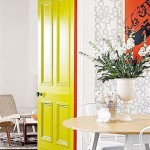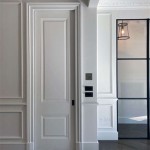What Color Interior Goes With a Red Car?
The selection of an interior color for a red car requires careful consideration. The vibrant and bold nature of red as an exterior paint choice necessitates an interior hue that complements instead of clashes. The objective is to achieve a cohesive and visually appealing aesthetic that reflects personal preferences while enhancing the overall vehicle design. Several factors influence the optimal interior color choice, including the specific shade of red, the vehicle's body style, and the desired level of contrast and sophistication.
Red cars inherently project a sense of energy, passion, and sportiness. Therefore, the interior should either amplify these characteristics or provide a balanced counterpoint. The wrong interior color can diminish the impact of the red exterior, creating a discordant and unattractive combination. In contrast, a well-chosen interior can elevate the vehicle's appearance, creating a luxurious and refined environment. Understanding the principles of color theory and how different colors interact is crucial in making an informed decision.
The following sections will explore several popular and effective interior color options for red cars, discussing their advantages, disadvantages, and suitability for various car models and individual tastes. The goal is to provide a comprehensive guide to help car owners and prospective buyers make a confident and stylish choice.
Black Interior: A Timeless and Versatile Choice
Black interiors represent a universally accepted and highly versatile option for red cars. Black complements red without overpowering it, creating a sophisticated and subtly aggressive look. This combination is particularly well-suited for sports cars and performance vehicles, as it enhances the feeling of power and speed. The inherent darkness of black also helps to conceal dirt and wear, making it a practical choice for daily drivers. Furthermore, black interiors tend to maintain their resale value due to their wide appeal.
A potential drawback of a black interior is its tendency to absorb heat, especially in warmer climates. This can make the cabin uncomfortable during the summer months, requiring the use of air conditioning more frequently. However, this issue can be mitigated by selecting seats with perforated leather or adding aftermarket window tinting. Another perceived disadvantage is the potential for a black interior to feel somewhat austere or lacking in visual interest. This can be addressed by incorporating contrasting elements such as brushed aluminum trim, carbon fiber accents, or stitching in a complementary color like red or silver.
The specific shade of black can also influence the overall effect. A matte black finish will appear more understated and refined, while a glossy black finish will create a more dramatic and eye-catching look. The choice will depend on the desired level of visual impact and the overall design aesthetic of the vehicle. In general, black is a safe and reliable option that will complement virtually any shade of red, from bright fire engine red to a deeper burgundy.
When choosing a black interior, consider the materials used. High-quality leather or Alcantara will provide a more luxurious and comfortable feel than cheaper synthetic materials. The texture of the material can also play a significant role in the overall aesthetic. For example, a heavily textured leather will create a more rugged and sporty look, while a smooth leather will exude elegance and sophistication.
Ultimately, a black interior offers a balanced combination of style, practicality, and versatility, making it a popular and reliable choice for red cars of all types.
Gray Interior: A Neutral and Sophisticated Alternative
Gray interiors offer a neutral and sophisticated alternative to black, providing a softer and more subtle contrast to the red exterior. Gray can range in shade from light silver to dark charcoal, offering a variety of options to suit individual preferences. A lighter gray interior can create a more spacious and airy feel inside the cabin, while a darker gray interior can provide a more grounded and intimate atmosphere. Gray is particularly well-suited for luxury cars and sedans, as it enhances the sense of refinement and elegance.
Unlike black, gray does not absorb as much heat, making it a more comfortable choice for warmer climates. It also tends to show less dust and dirt than black, making it easier to maintain a clean and tidy interior. Furthermore, gray is a versatile color that can be easily paired with other accent colors, allowing for customization and personalization. For example, a gray interior can be complemented by wood trim, chrome accents, or stitching in a contrasting color like red or blue.
One potential drawback of a gray interior is its potential to appear somewhat bland or uninspired. To avoid this, it is important to select a shade of gray that is visually interesting and consider adding contrasting elements to break up the monotony. For example, a two-tone gray interior with lighter seats and darker dashboard can create a more dynamic and visually appealing look. Alternatively, incorporating patterned inserts or unique stitching can add a touch of personality and individuality.
When choosing a gray interior, it is important to consider the specific shade of red on the exterior of the car. A brighter, more vibrant red may pair better with a lighter gray, while a deeper, more subdued red may complement a darker gray. Experimenting with different combinations is crucial to finding the perfect match. In addition, consider the overall design aesthetic of the vehicle. A modern, minimalist design may benefit from a lighter gray interior, while a more traditional design may be enhanced by a darker gray interior.
Gray interiors provide a sophisticated and versatile option for red cars, offering a balanced combination of style, comfort, and practicality. With careful consideration and a touch of personalization, a gray interior can elevate the overall appearance of the vehicle and create a welcoming and refined environment.
Beige or Tan Interior: A Classic and Luxurious Pairing
Beige or tan interiors represent a classic and luxurious pairing with red exteriors, evoking a sense of warmth and elegance. These lighter hues create a striking contrast with the bold red paint, making the car stand out while maintaining a sophisticated aesthetic. Beige and tan interiors are often found in luxury cars and convertibles, as they complement the open-air experience and create a relaxed and inviting atmosphere. These colors also tend to reflect more light than darker options, making the cabin feel more spacious and airy.
The warm tones of beige and tan can soften the aggressive nature of a red exterior, creating a more balanced and approachable look. This combination is particularly well-suited for classic cars and vintage vehicles, as it evokes a sense of timeless style and refinement. Furthermore, beige and tan interiors can be easily customized with wood trim, leather accents, and contrasting stitching. For example, a beige interior with walnut wood trim and dark brown leather accents can create a luxurious and sophisticated environment.
One potential drawback of beige and tan interiors is their susceptibility to staining and dirt. These lighter colors require more frequent cleaning and maintenance to keep them looking their best. Furthermore, some shades of beige can appear dated or unflattering, especially when paired with certain shades of red. Therefore, it is important to carefully consider the specific shade of beige or tan and ensure that it complements the exterior paint color.
When choosing a beige or tan interior, it is crucial to select high-quality materials that are durable and easy to clean. Leather is a popular choice for luxury vehicles, while synthetic materials like vinyl or microfiber can provide a more affordable and practical option. The texture of the material can also play a significant role in the overall aesthetic. For example, a smooth leather will create a more elegant and refined look, while a textured fabric will add a touch of visual interest.
Beige and tan interiors offer a timeless and luxurious option for red cars, providing a striking contrast and a warm, inviting atmosphere. With careful selection and proper maintenance, these colors can enhance the overall appearance of the vehicle and create a sophisticated and comfortable driving experience.
In conclusion, the selection of an interior color for a red car involves careful consideration of various factors, including the specific shade of red, the vehicle's body style, and personal preferences. Black, gray, and beige/tan represent popular and effective choices, each offering unique advantages and disadvantages. By understanding the principles of color theory and exploring different combinations, car owners can make an informed decision that enhances the overall aesthetic and creates a stylish and comfortable driving environment. Beyond these commonly chosen colors, other options such as white, brown, or even bolder colors like red itself can be considered, though these require a more advanced understanding of color coordination to avoid a visually jarring effect.

Best Interior Color With Torch Red Corvetteforum Chevrolet Corvette Forum Discussion

Best Interior Color With Torch Red Corvetteforum Chevrolet Corvette Forum Discussion

Brown Interior With Red Car Page 2 Rennlist Porsche Discussion Forums

Looking For Pics Of Red Car Tan Interior Third Generation F Message Boards

Best Interior Color With Torch Red Corvetteforum Chevrolet Corvette Forum Discussion

What Colour Seat Cover Matches A Red Car Quora

What Colour Seat Cover Matches A Red Car Quora
Favourite Exterior Interior Combination Colours 2addicts Bmw 2 Series Forum
Which Interior Color Black Or Red The Lotus Cars Community

Rare Color Interiors Pelican Parts Forums
Related Posts








